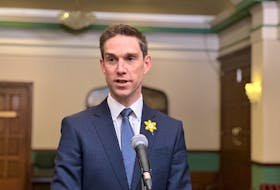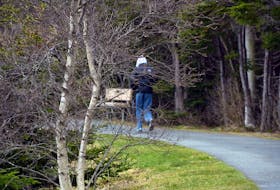
Flooding of the Muskrat Falls reservoir will likely proceed in the coming days, after indigenous leaders have had time to get experts to review the Muskrat Falls dam engineering reports to be satisfied that the flooding is critically necessary.
But the reservoir will only be flooded to the minimum extent necessary to avoid ice damaging the partially completed hydroelectric dam, and then at the end of the winter, the water will be drained back down to previous levels.
This will give time for an Independent Expert Advisory Committee — made up of representatives from indigenous communities, as well as provincial, federal and municipal governments — to study the environmental mitigation methods and find the most effective way to minimize toxic environmental contamination.
The leaders said that their discussions all focused around the health of Labradorians, and how to effectively minimize the damage of toxic methylmercury as a byproduct of flooding the reservoir above the Muskrat Falls hydroelectric dam.
“We took the view that we had to make change, and we had to make progress to ensure that the impacts of methylmercury could be minimized,” NunatuKavut president Todd Russell said at the end of it all.
“I am confident that the proposal that we have agreed upon, the approach that we are taking going forward will ensure these things.”
Nunatsiavut President Johannes Lampe also called on his people to stand down.
“To our Labrador Inuit, your push to get us to the table with the premier and other leaders has made progress,” he said.
“If you are still at the site, within or without, or if you are still doing the hunger strike, go home.”
Within an hour, from Ottawa, Labrador MP Yvonne Jones posted a picture on Twitter of three happy indigenous activists ending their hunger strike by eating smoked arctic char.
For weeks, opposition to the Muskrat Falls project in Labrador has reached a fever pitch, with demonstrators blocking access to the site, and some activists who identify as “land protectors” actually breaking into the site and occupying one of the accommodations buildings, effectively halting construction work.
Related story:
Talks with indigenous leaders stretch into the night
After the land protectors started occupying the site, Ball ended his vacation in Florida and arranged the meeting with indigenous leaders — a meeting that started just before 3 p.m. Tuesday, and didn’t finish until they came out to speak to the media around 2 a.m.
But Ball insisted that the activists didn’t actually cause the government to change course on the methylmercury mitigation strategy.
“This is not directly related to any protest,” Ball said. “This is really a direction that we have taken in consultation with our aboriginal leaders.”
The indigenous leaders — Russell, Lampe and Innu Nation Grand Chief Anastasia Qupee — delivered a different message.
“It is unprecedented that mitigation measures will not rest solely within the purview of a provincial or federal regulator. It will shift to include independent science, and the recommendations they make,” Russell said to the land protectors.
“You have done your job and you have done it well, because at the end of the day we had at the heart of this the health and well-being of our people.”









